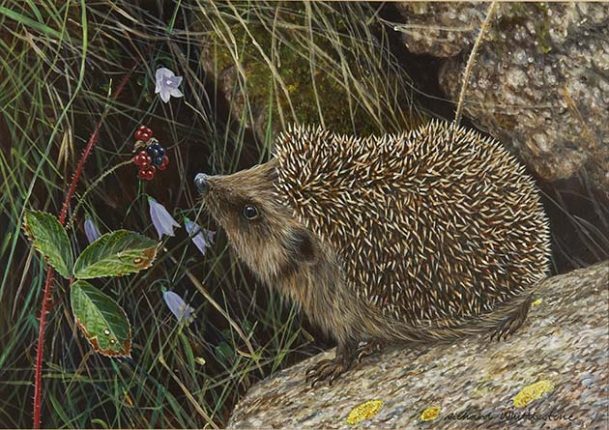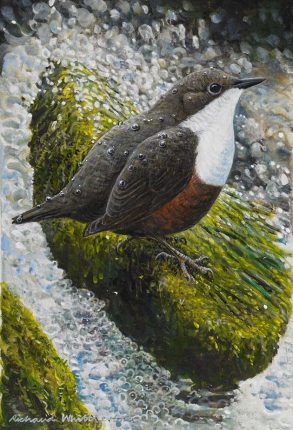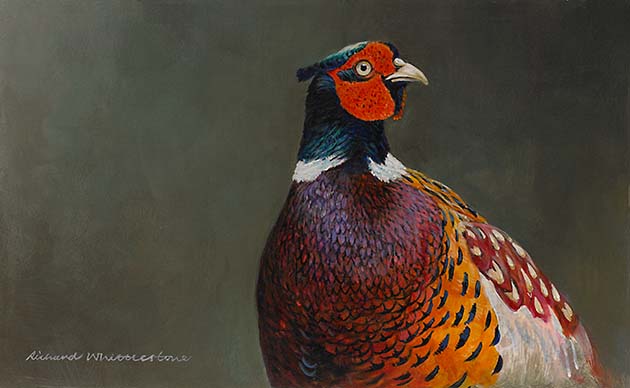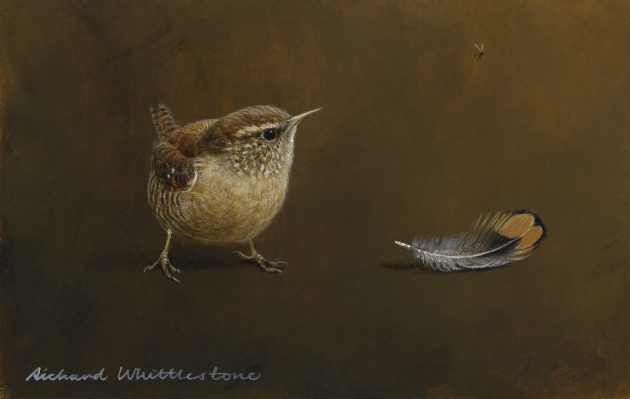Richard Whittlestone delights in revealing the hidden beauty of birds and animals that are so often overlooked, says Janet Menzies
The UK micro safari has always fascinated sporting artist, Richard Whittlestone, and has spent countless hours observing Britain’s wildlife to ensure he gets every detail in his paintings as accurate as it can be.
RICHARD WHITTLESTONE
Exciting lions and elephants charge across the canvases of so many wildlife artists that Richard Whittlestone confesses disarmingly: “I used to feel embarrassed that I don’t get a kick out of painting the ‘big five’.” Britain doesn’t have a ‘big five’ list of glamorous safari must-spot animals, and even if it did, it has to be admitted the humble hedgehog would not bumble its way on to it. Yet on Whittlestone’s hedgerow safaris, it is the eye-level wildlife – the tiny wren, the hedgehog and the cheeky weasel – that provide a secret drama.

He jokes: “My wife says, ‘All your animals are brown!’ Yes, the little brown jobs are not flashy, but the feather patterning is exquisite. I painted a wren yesterday and the patterning on the flank and on the wing and the black markings were so subtle. Of course, your bullfinch is beautiful, but really it only has three colours and they are not subtle. It is bringing out the hidden beauty in the detail of the brown birds that I love to do. It fires me up still – every one is a voyage of discovery.”
This micro safari has fascinated Whittlestone for as long as he can remember: “My love of nature came from growing up in the countryside on my parents’ dairy farm. The painting came, I think, from my mother, and my inspiration was from Grandmother, an exceptional person and a keen biologist. She taught me about birds – how they fly, watching them dip their wings and fanning their tails. She had this huge book, Birds of the World, and even then it wasn’t the parrots and the macaws that I liked – it was the birds that I recognised, the blackbirds and wrens and song thrushes. The little birds that are overlooked that we can all see in our countryside – those are the ones I want to portray and bring out their beauty.”

Britain’s animals are if anything even browner and more discreet than its birds – and often nocturnal as well. Whittlestone agrees: “I am always out early doors, or in the evenings putting the hens away, so I am lucky enough to see hedgehogs and badgers in semi-daylight. They are nocturnal animals. When you are painting them you are always cheating a bit, because there has to be light in the painting. And with hedgehogs, they have surprisingly long legs, which are not what we expect to see in a portrait of a hedgehog. So you have to use a bit of artistic licence and paint from an angle looking down on them.”
But Whittlestone doesn’t want to create chocolate-box images of wildlife: “You want to show the truth, but without making it into a photograph.” He admits, though, that hedgehogs will always be cute: “Who doesn’t love a hedgehog? They are having a bad time at the moment, but I hope they will have a resurgence. There is an ebb and flow in nature, and it is unseen. I don’t think we really understand it.”
Seeing the unseen is key to Whittlestone’s work. He has never lost that early fascination in spending hours observing wildlife really minutely, from the child’s perspective. He explains: “I have sketchbooks that go back to the 1970s, which I still use all the time. I often dream my paintings, and I think about past paintings and draw on the knowledge that I have built up over the years.”
A big step came for Whittlestone when he was only 10 and, having developed an interest in taxidermy, he won a bribe from his mother to get a stuffed bird if he passed his piano exam. “She not only kept her promise, but even better, found a taxidermist, and I spent every Saturday learning taxidermy. When I grew up, I even had a taxidermy business for a decade. It was invaluable for my painting, learning the anatomy of animals. You have to know the inside of your subject in order to paint what you see on the outside. I tend to compose the image of the bird in my head, and then I work from the feathered skin to get the details perfect.”

The rainbow plumage of Whittlestone’s cock pheasant portrait is not of a favoured little brown job, but the graduated detail of its iridescent breast feathers guarantees to have you hovering around the game cart in appreciation next time you are shooting. Yet Whittlestone feels his greatest challenge is yet to come: “I am working on a book of my life and work, and it is out of my comfort zone. Writing about nearly 60 years of painting, and also about myself, is proving harder than I thought.”
Richard Whittlestone is exhibiting over the summer at his gallery, The Wildlife Gallery, in Pilsey, near Chatsworth House. Visit: richardwhittlestone.co.uk





